This is my entry for the #BeautifulSunday challenge, initiated by @ace108. Thanks, my friend!
And I'm also posting today inspired by #SublimeSunday, a tag from @c0ff33a! Thanks!
Today I'm writing about my visit to Borobudur Temple, in Central Java, Indonesia (#indonesia). This post is dedicated to @juancar347, because the dream commands life!
(Post in Portuguese soon ;)!)
Borobudur is the world’s largest Buddhist temple located in Central Java, Indonesia (2,500 m²). Dated from the 9th-century, is listed as a UNESCO World Heritage Site.
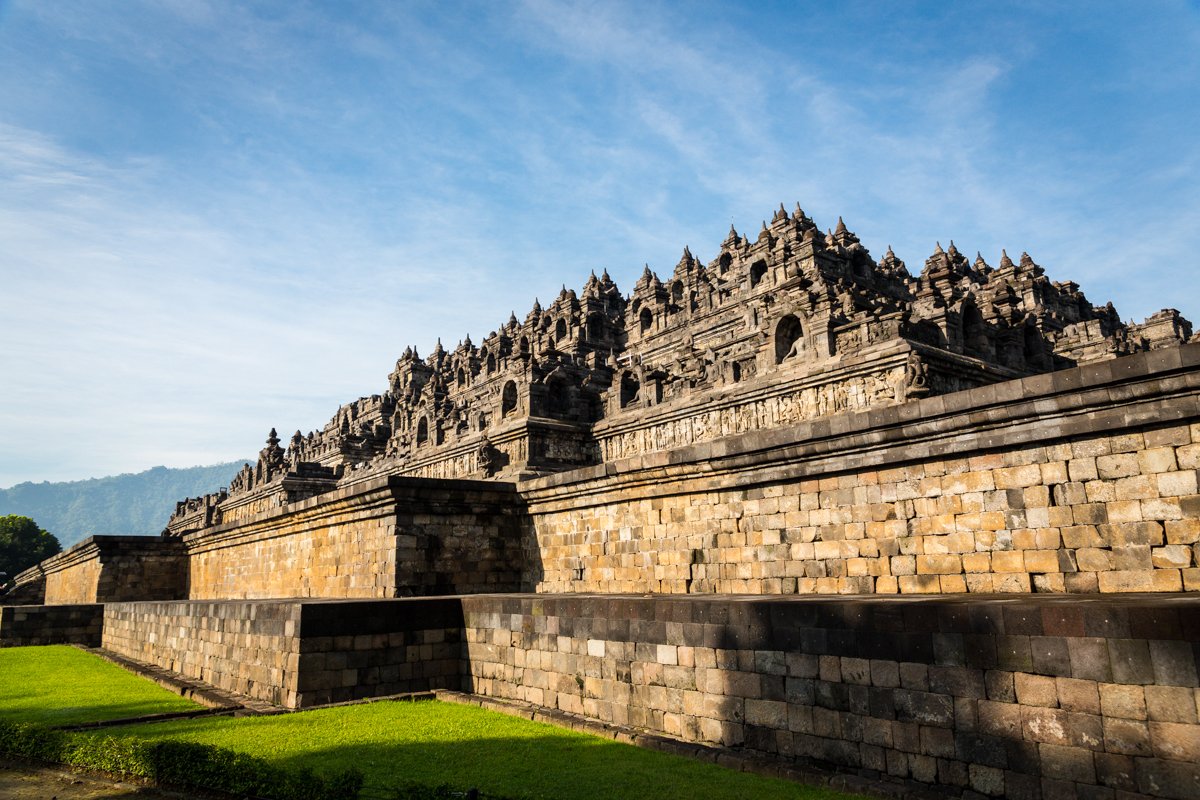
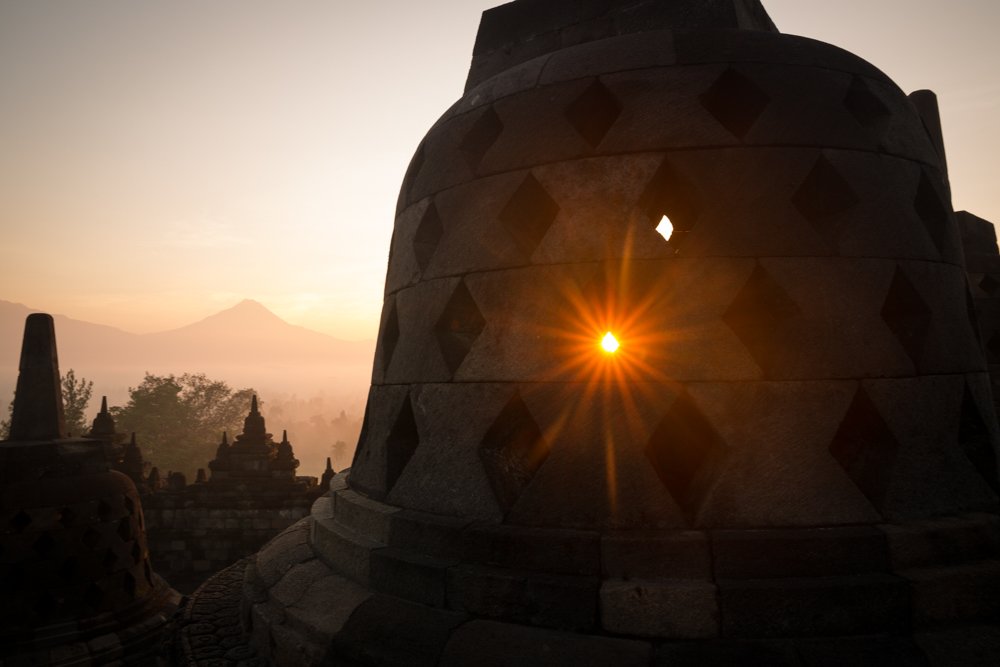
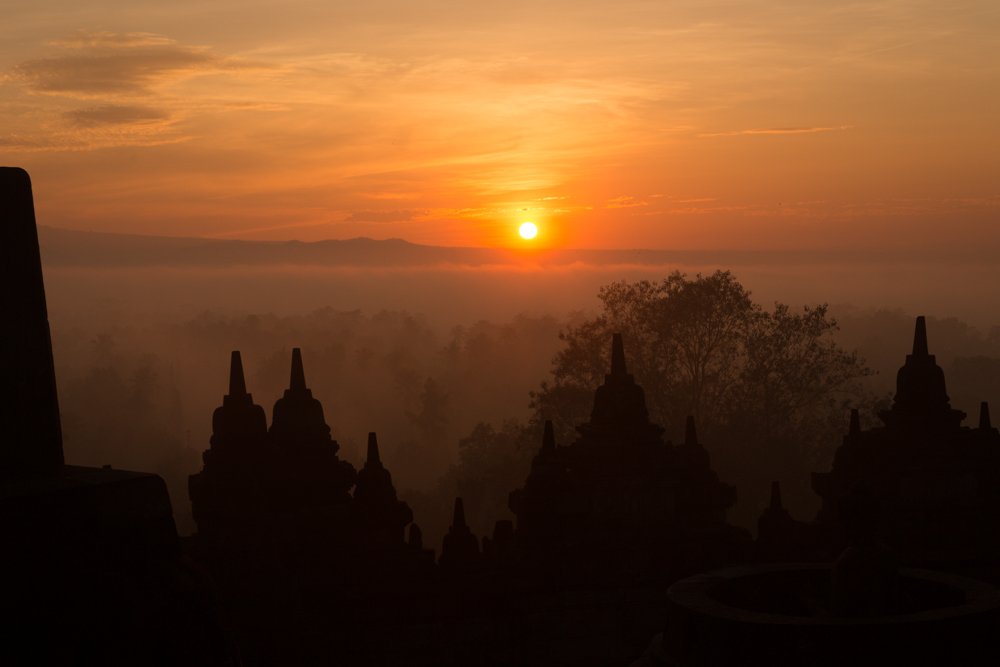
It’s built in six square terraces and, at the top, three circular ones. It has around 2.500 bas-relief panels and 504 Buddha statues. Each terrace has the number of Buddhas as seen in the photo below, and they are different from each other. Also, their hand's gestures have different meanings, from blessings to wisdom.
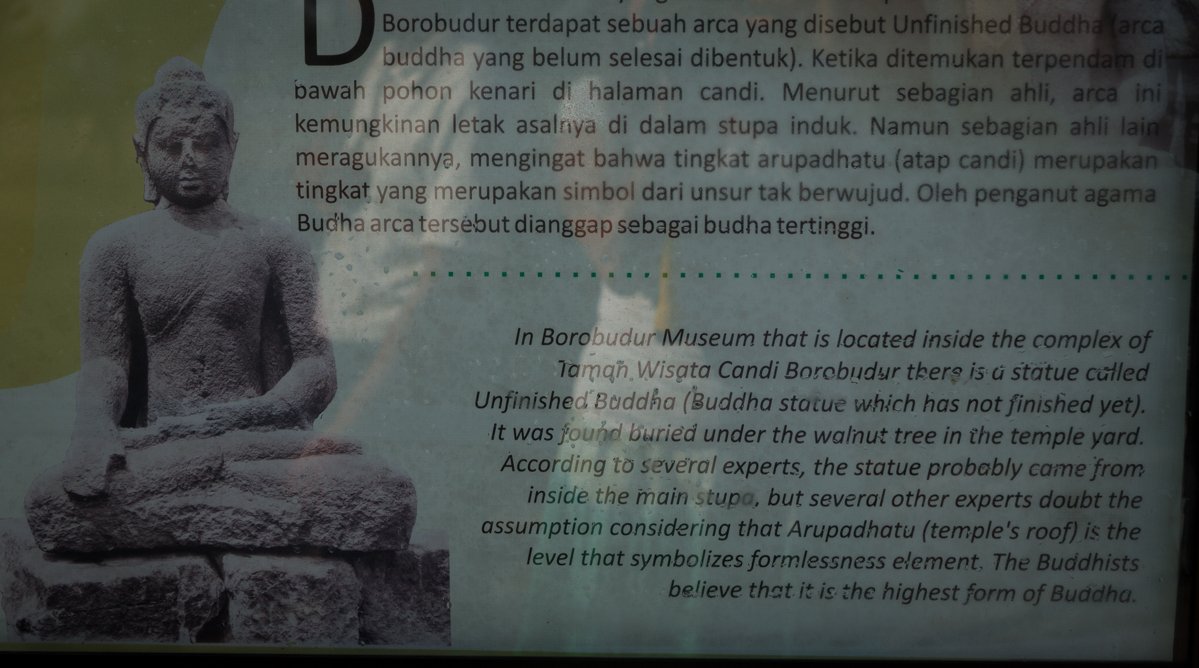
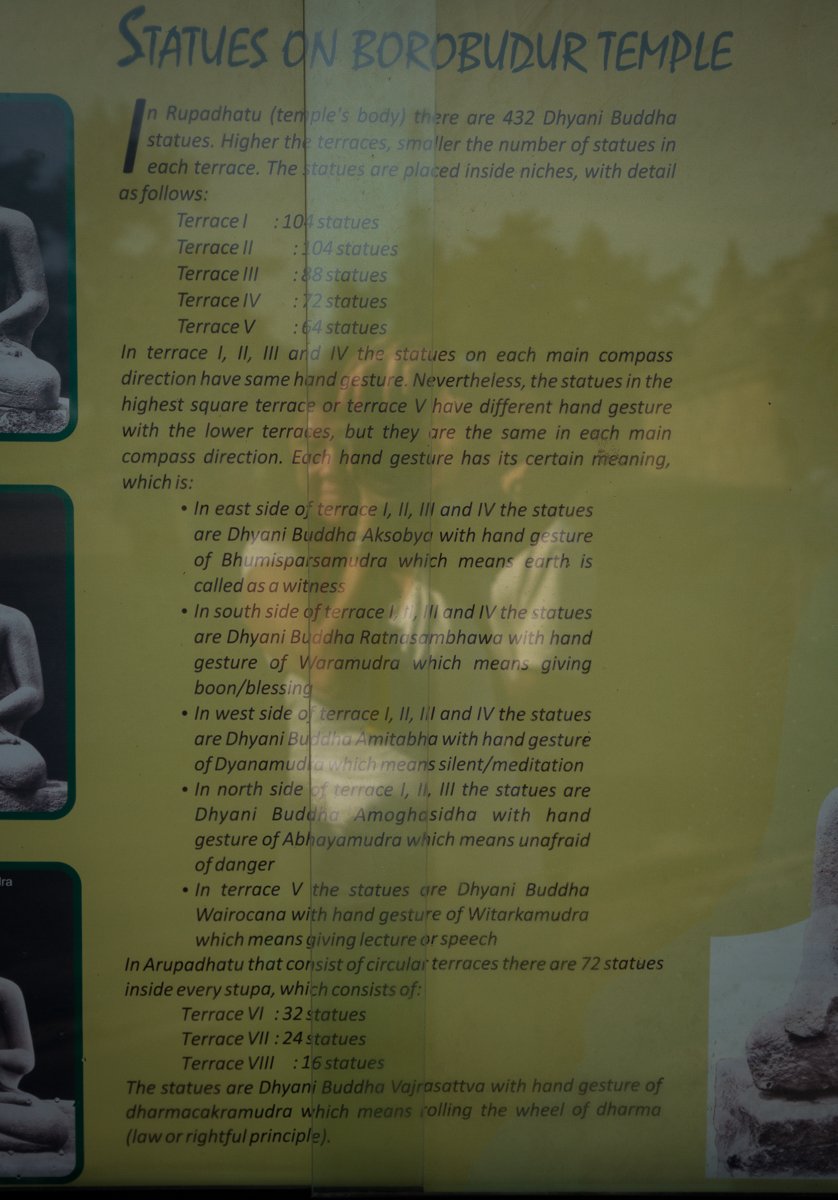
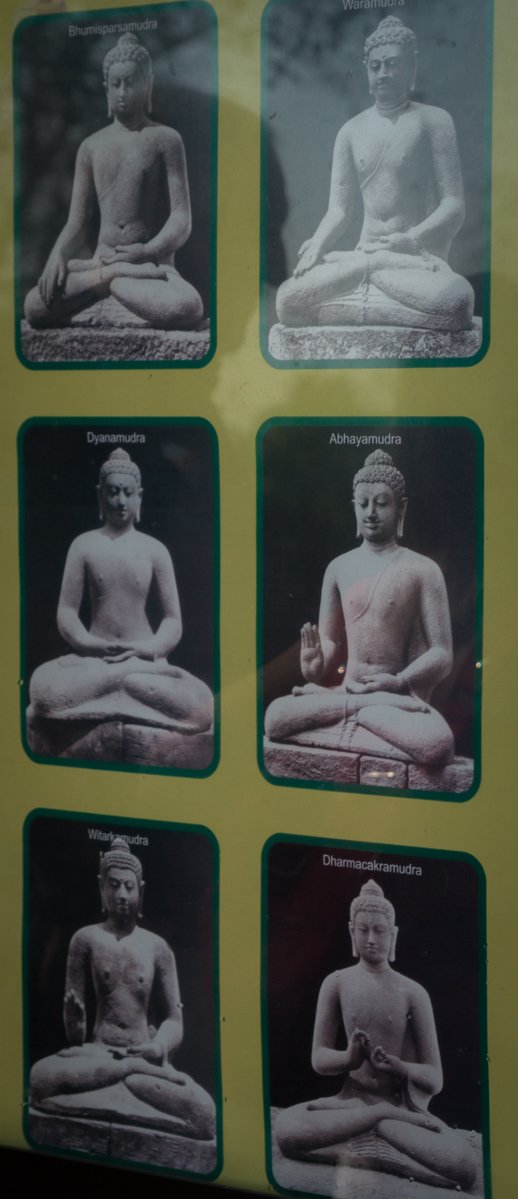
The bas-reliefs surface is 2,500 square meters and they are distributed at the hidden foot (Kāmadhātu) and the five square platforms (Rupadhatu). They depict mundane activities, from gossip to murder, with their corresponding punishments. Completed with the full panorama of samsara (the endless cycle of birth and death).
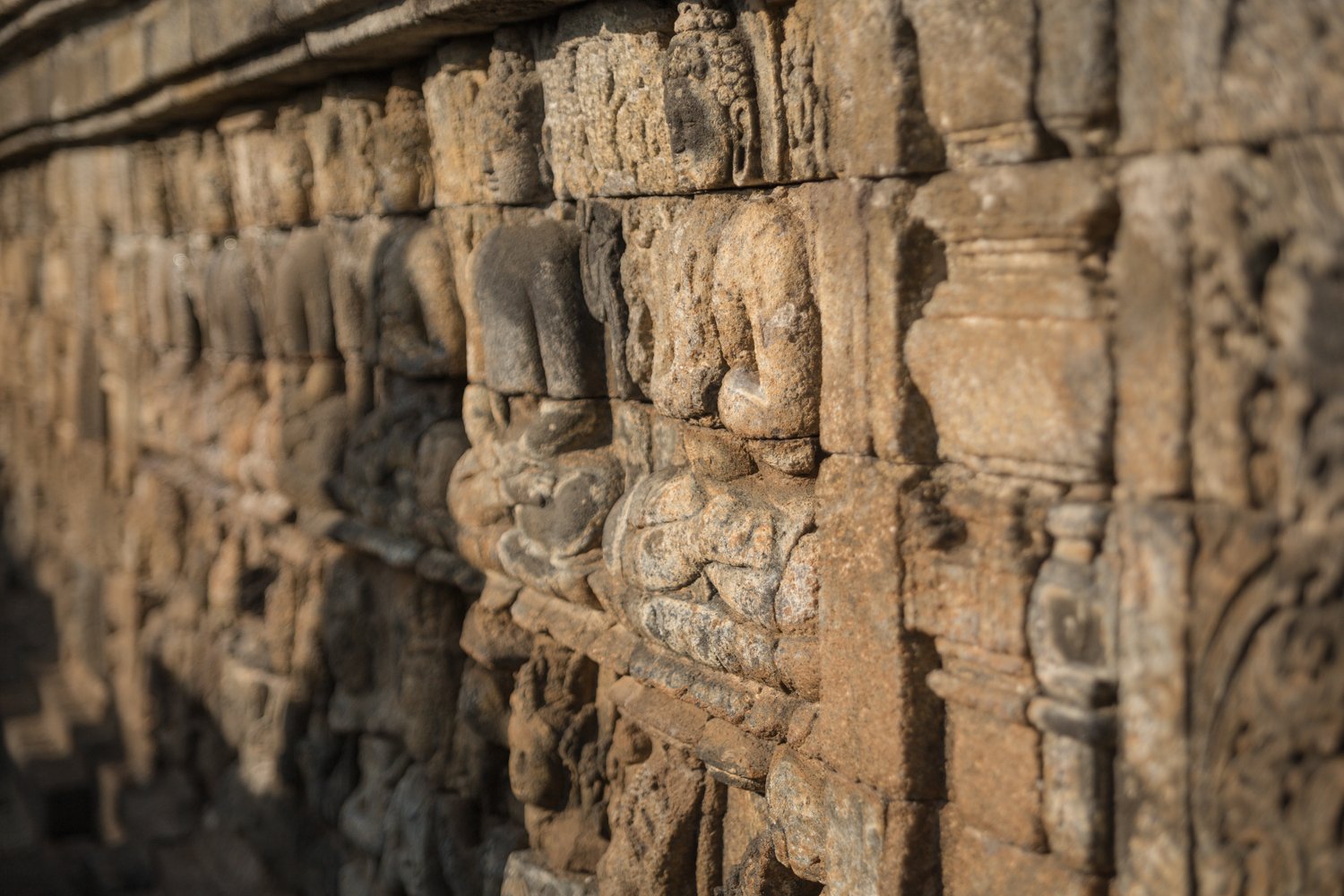
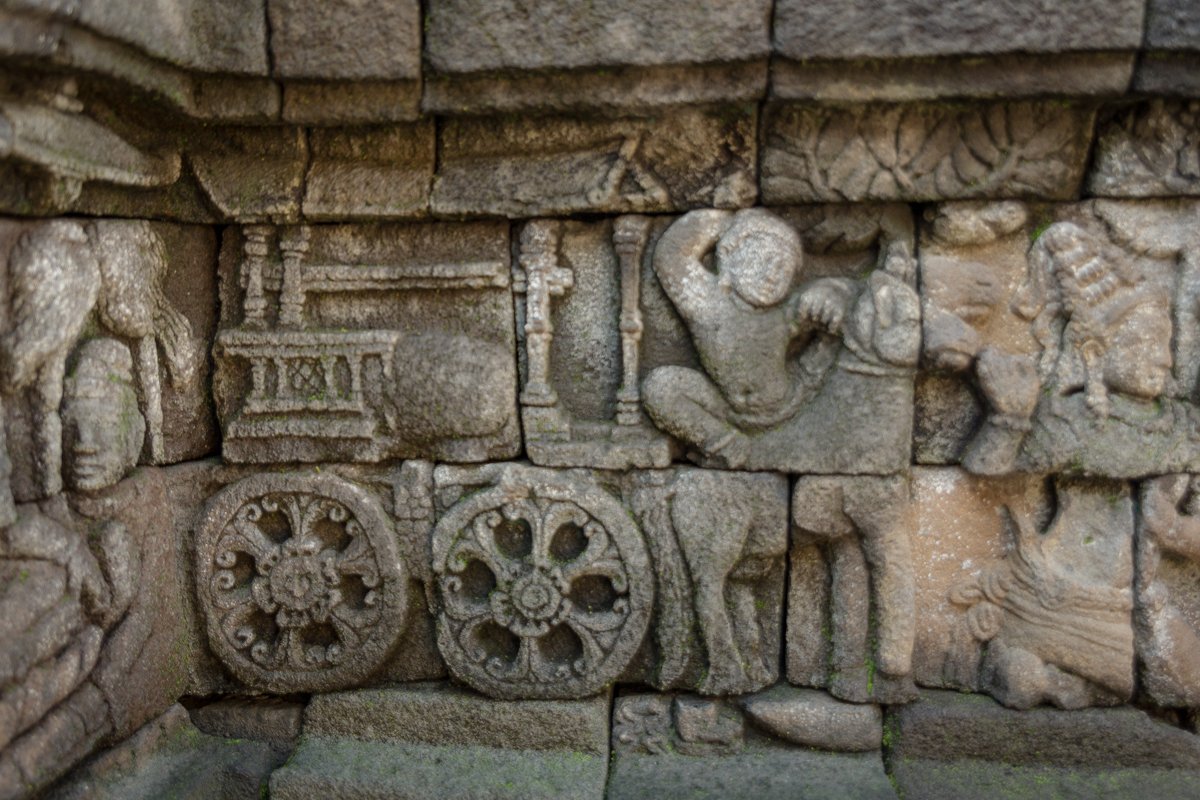
A main dome, located at the center of the top platform, non perforated and symbolizing Nirvana (formless element), is surrounded by 72 Buddha statues each of which is seated inside a perforated stupa (A stupa is a mound-like or hemispherical structure containing Buddhist relics, typically the ashes of Buddhist monks, used by Buddhists as a place of meditation). On each platform, the perforated stupas are in different forms, and they are getting less intricate each level we climb, symbolizing the ascending to the formless state.
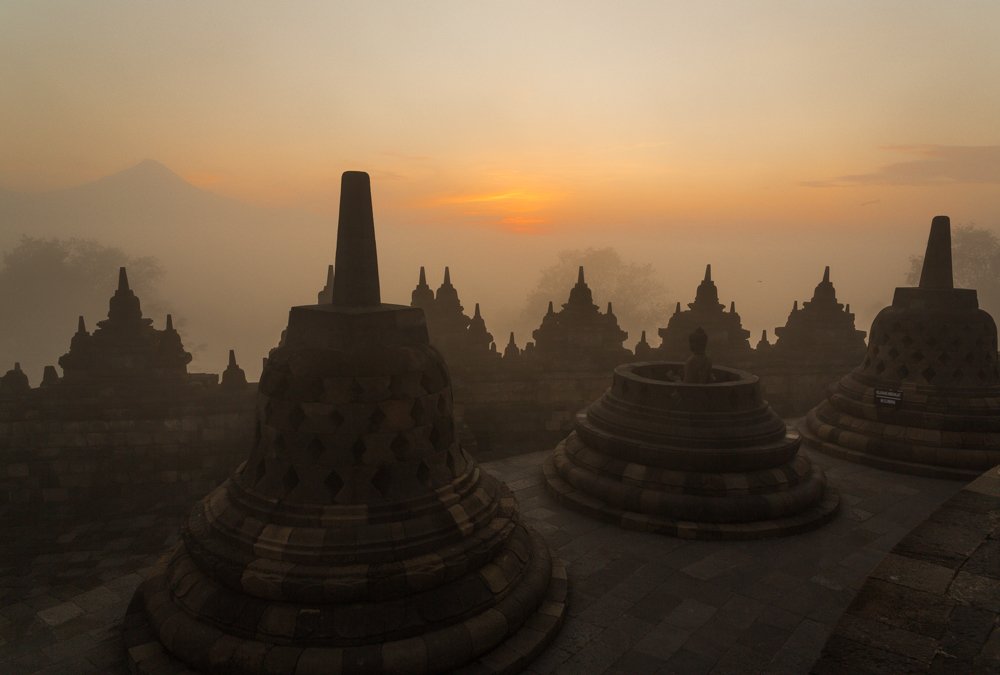
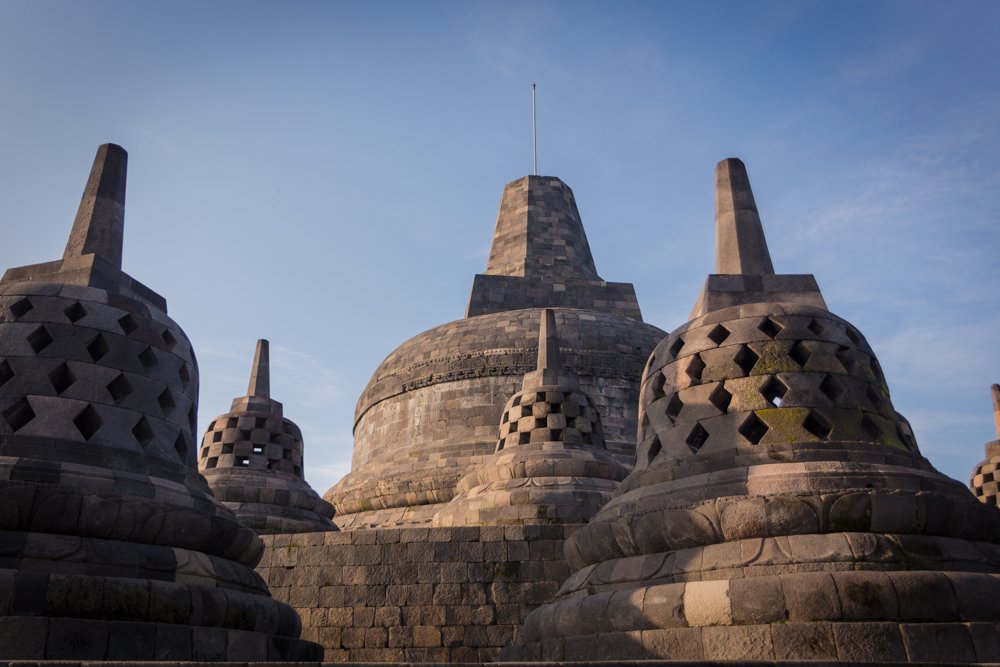

Some of the stupas are uncovered and the Buddhas can then be fully seen. The guide that lead us to the temple informed that Borobudur, Angkor Wat (Cambodia) and Bagan (Myanmar) form a “triangle” and some uncovered Buddhas are facing the Buddhas of those temples. This amazed me to the point of realizing how developed was already the geography and knowledge of those ancestral times!
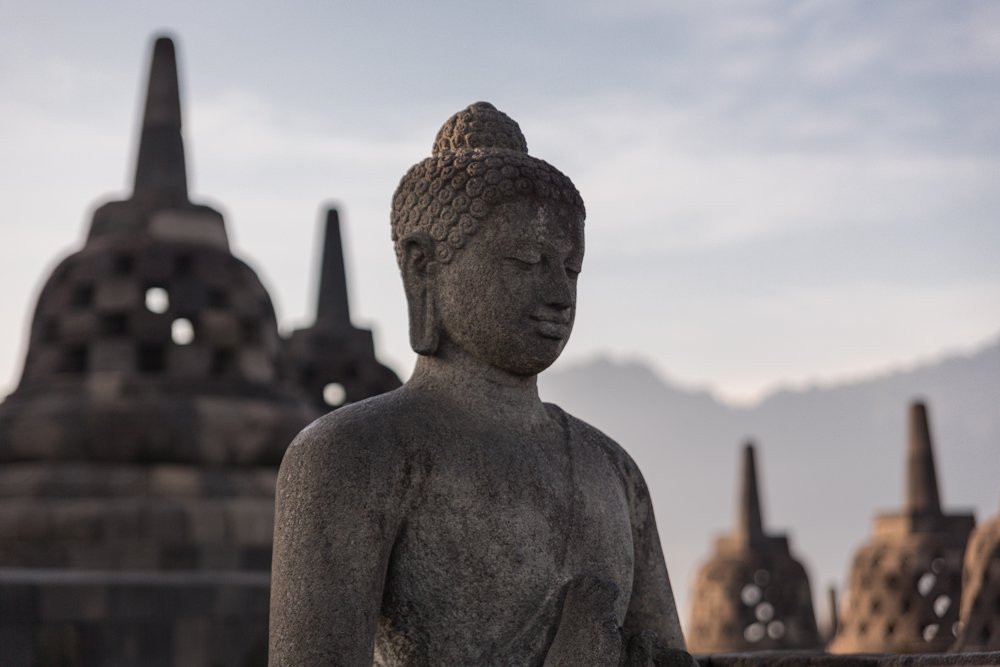

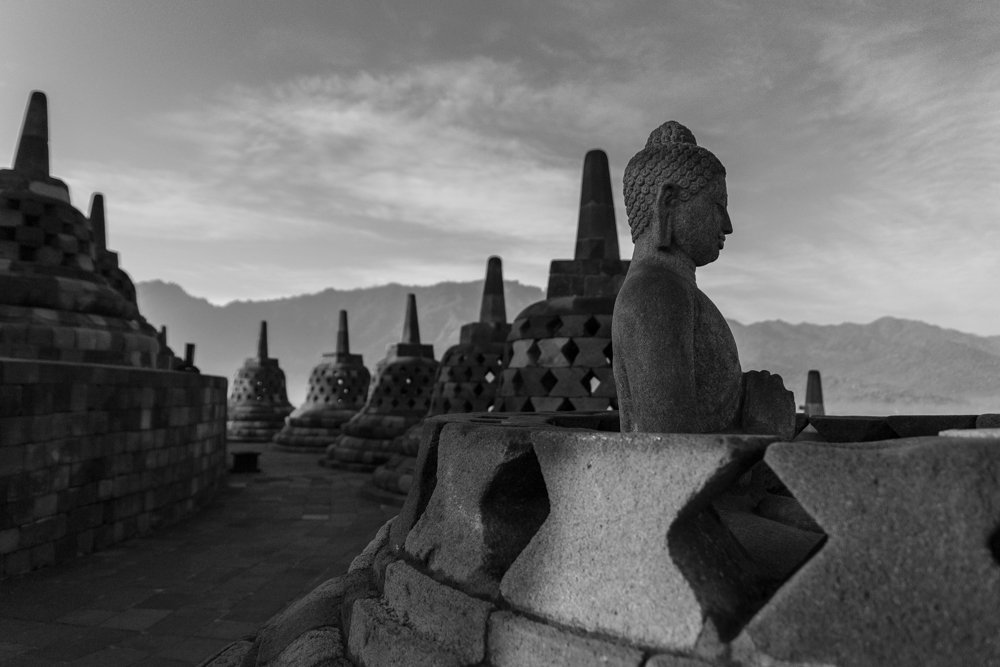
Many of the statues were beheaded along the time, and they can be seen at the most famous museums of the world, as the Louvre, in Paris.
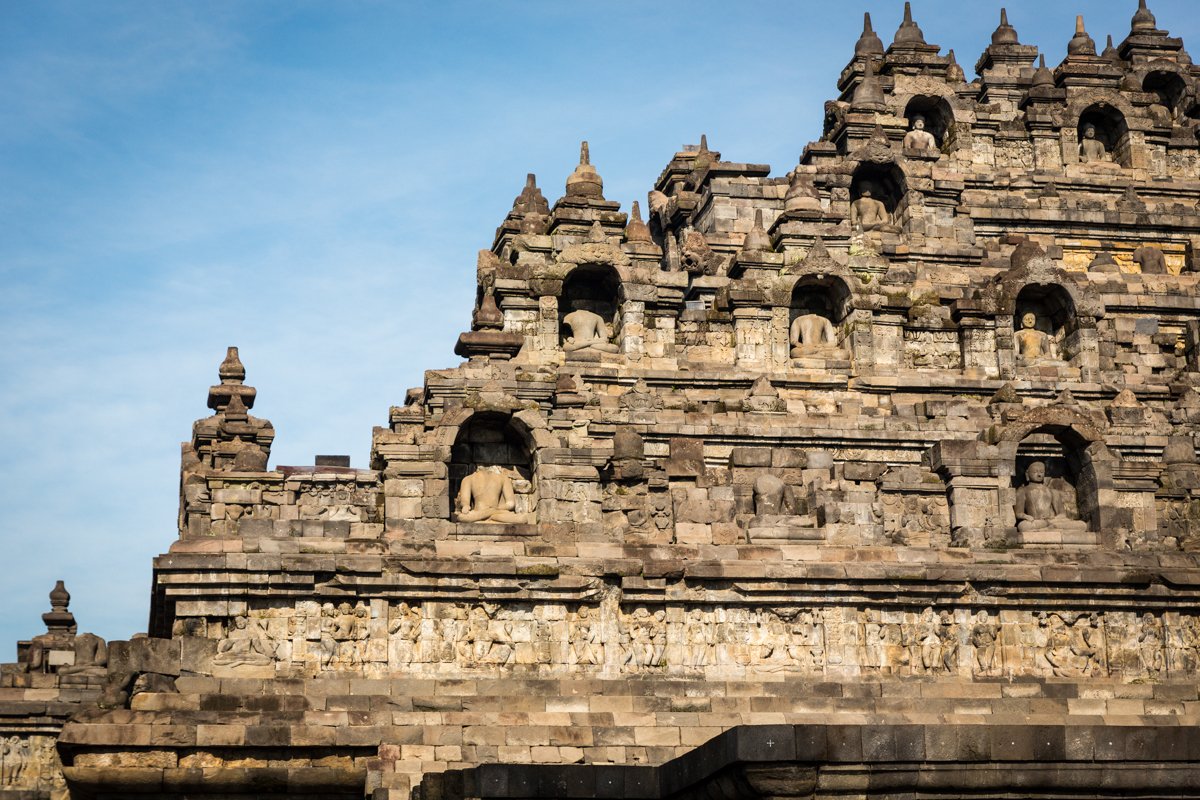
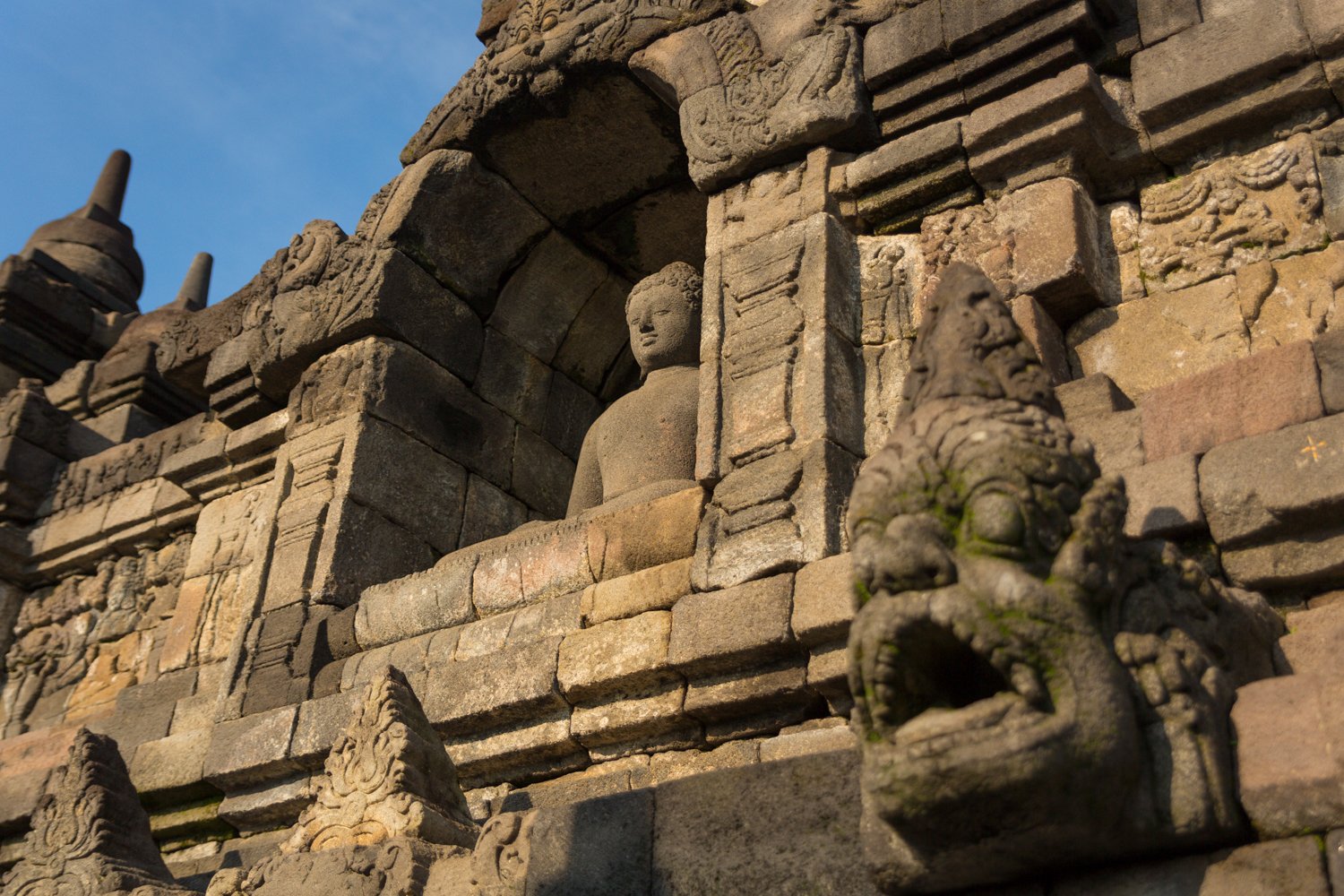
Opposite Borobudur, there’s the Merapi volcano (literally Fire Mountain in Indonesian). It’s the most active volcano in Indonesia. Smoke can be seen emerging from the mountaintop at least 300 days a year.
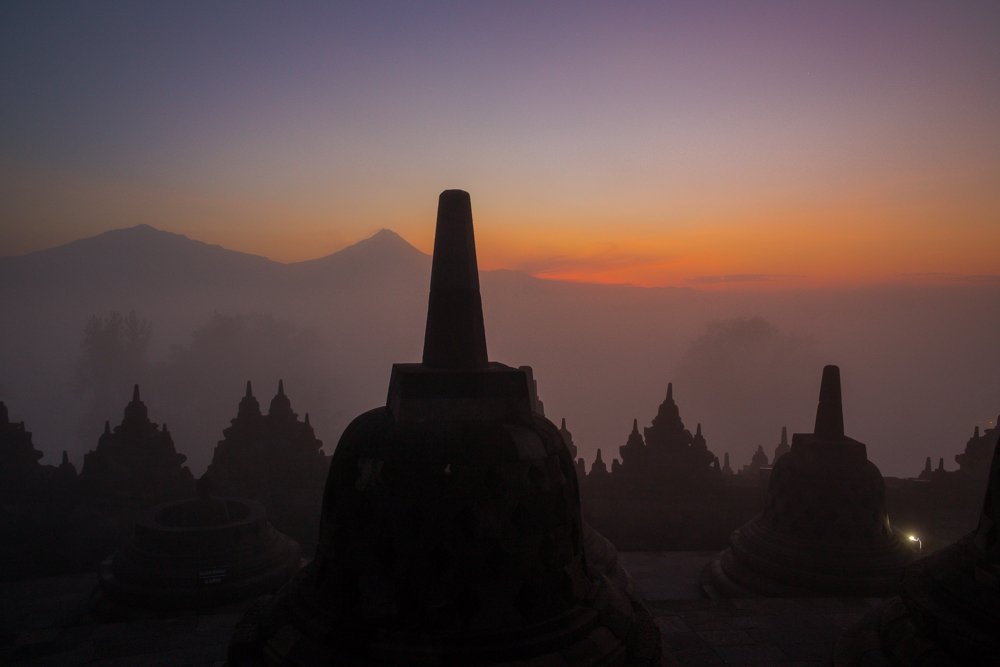
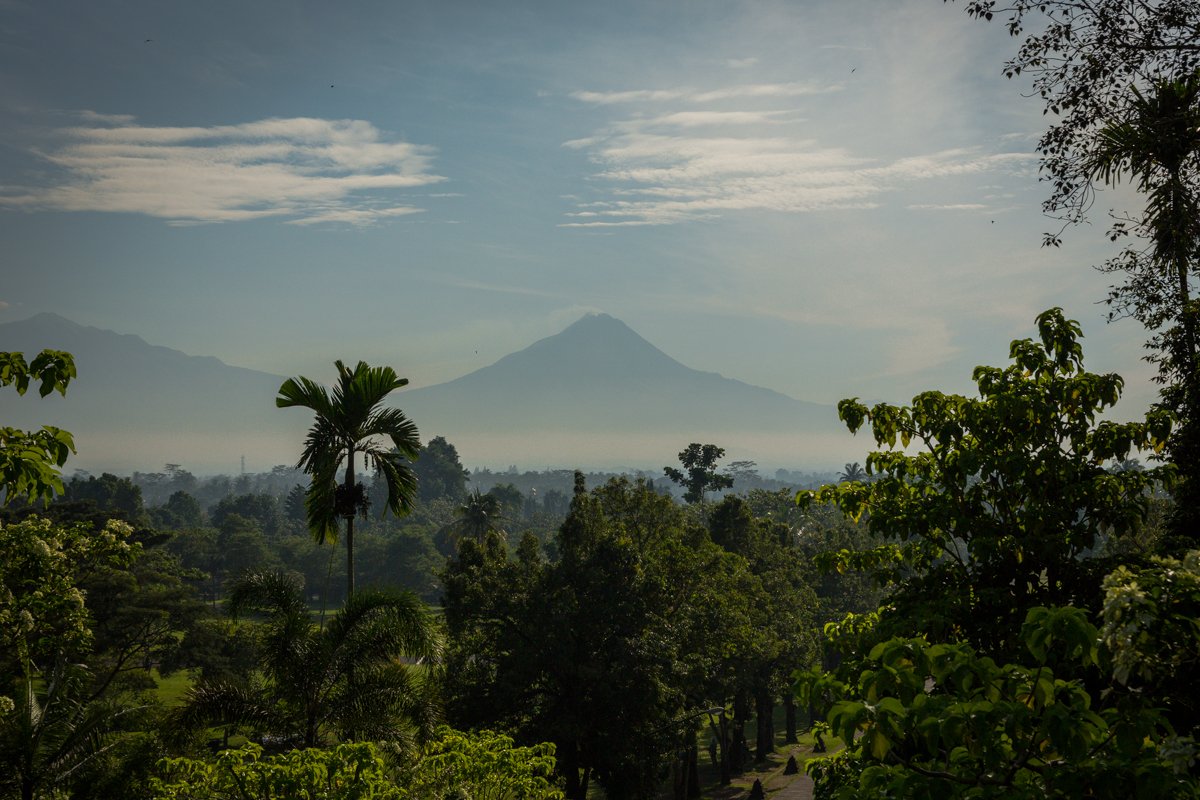
Original text based on the sources (and some excerpts): Wikipedia and www.borobudurpark.com
All photos were taken by me.
I hope you all enjoyed the visit :)
Thanks, @ace108 and @c0ff33a :)
Have a great Sunday, my friends.
Hippiesoul @nolasco
Isabel
www.isabelnolasco.com



